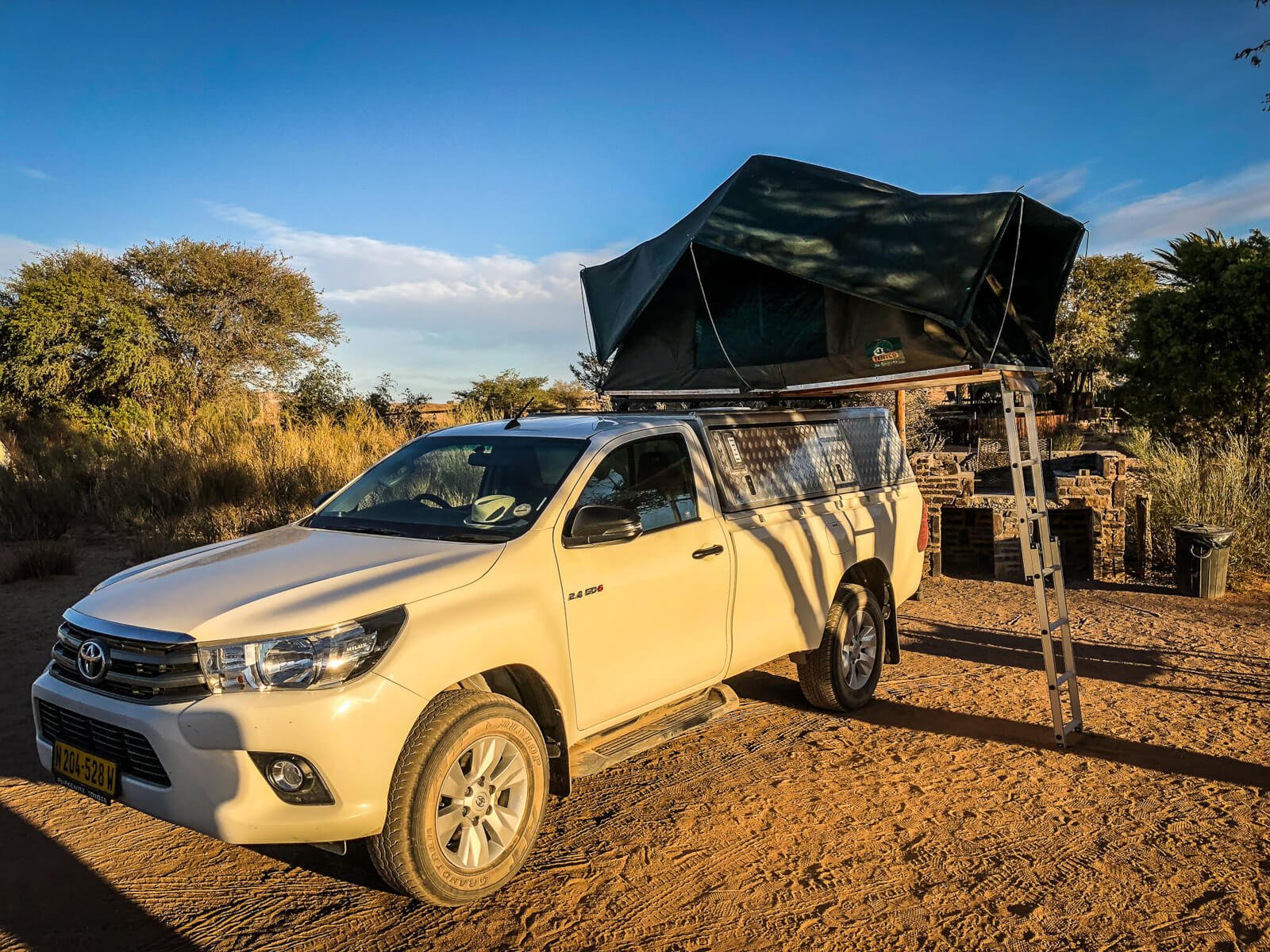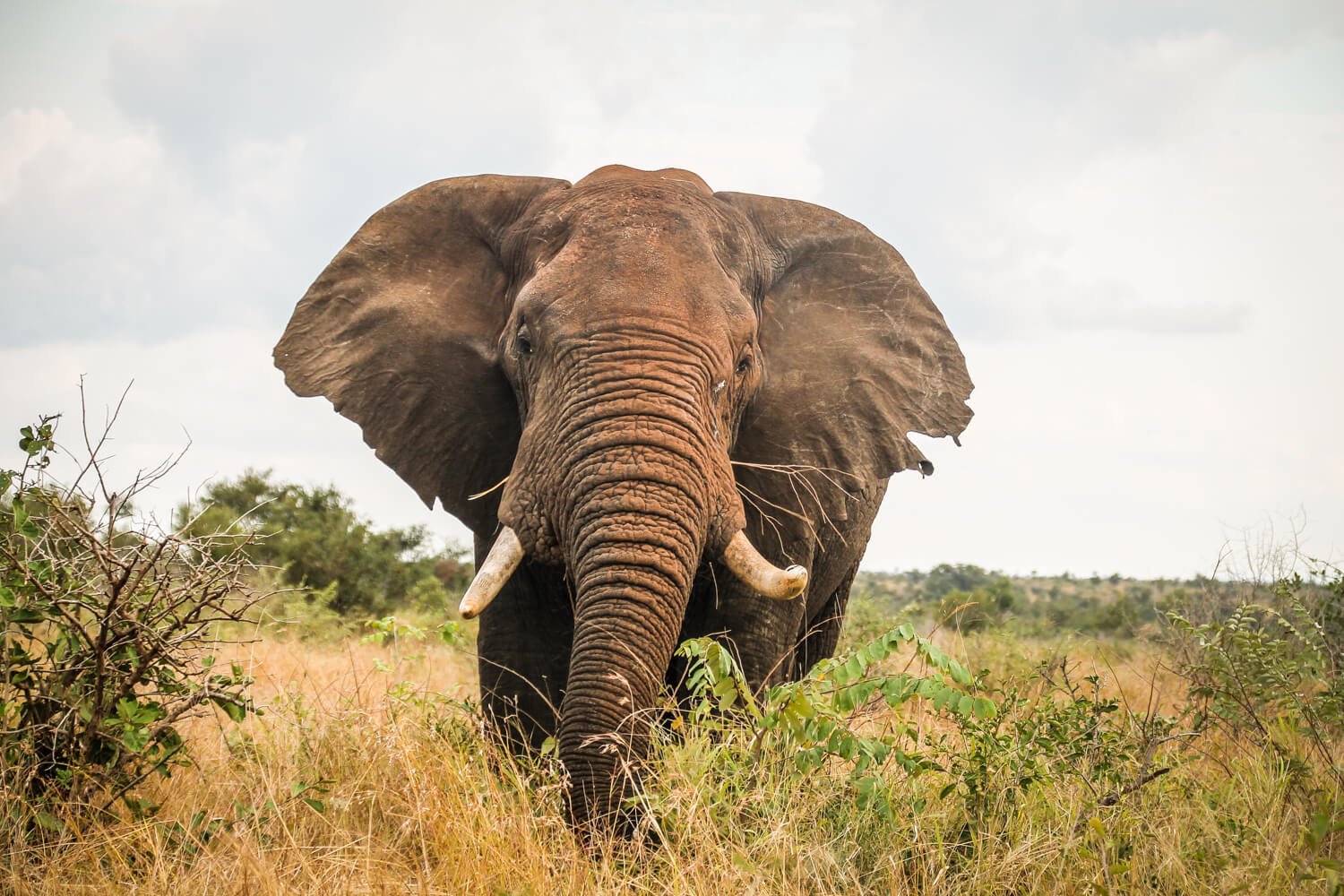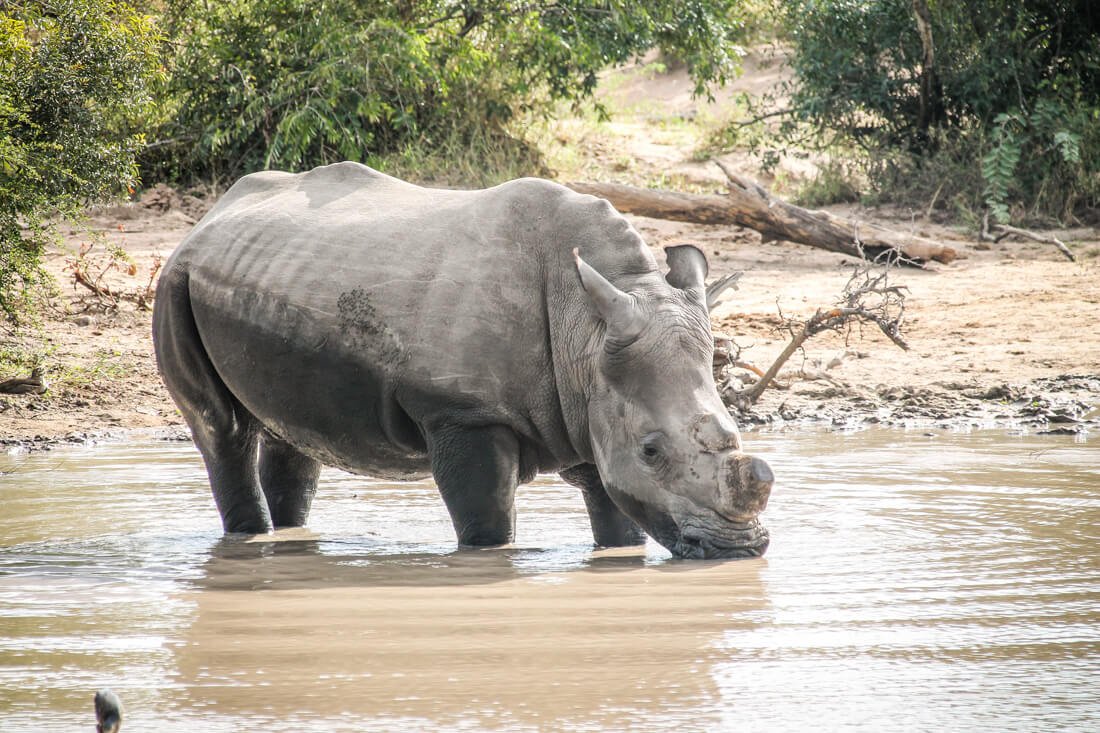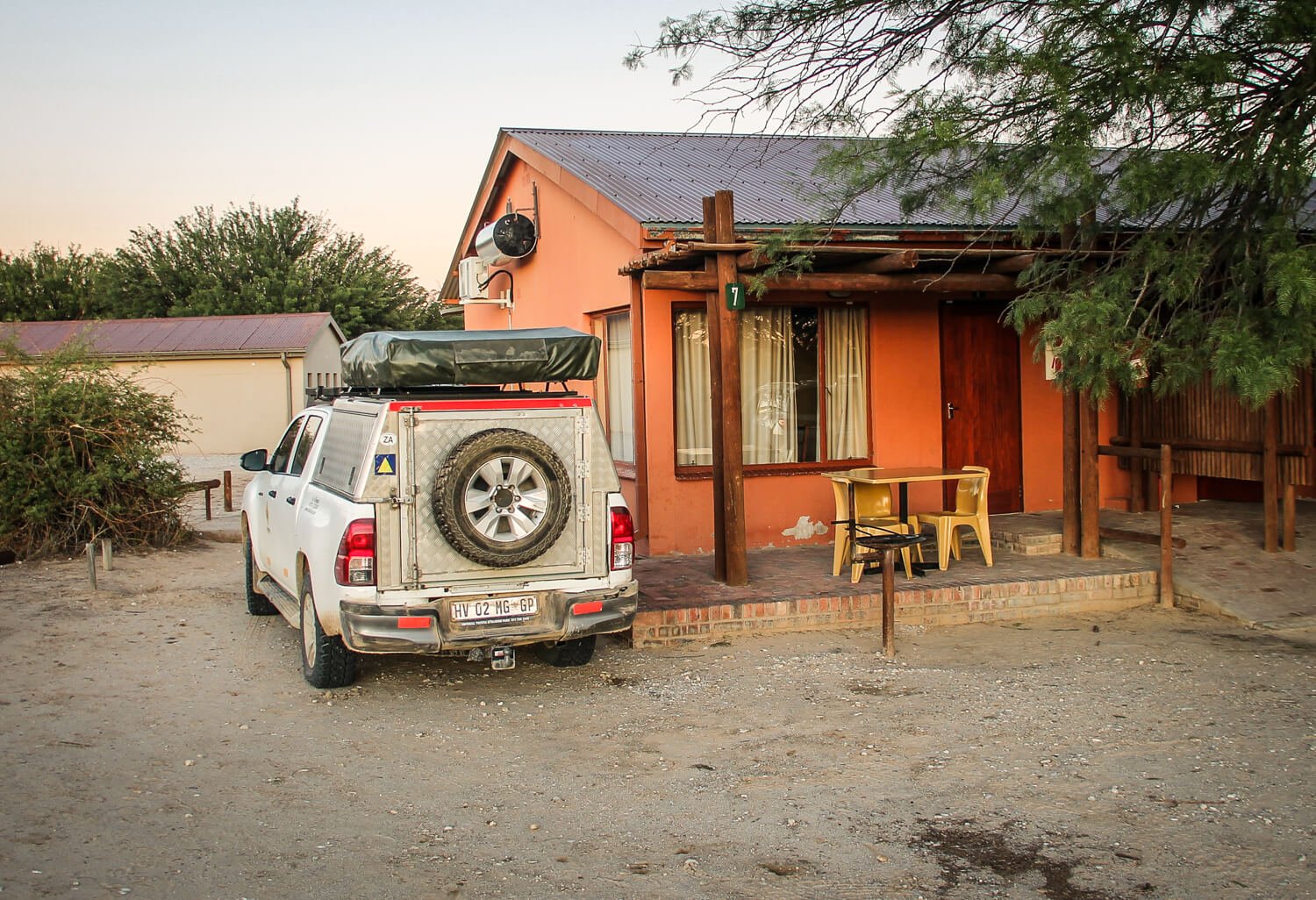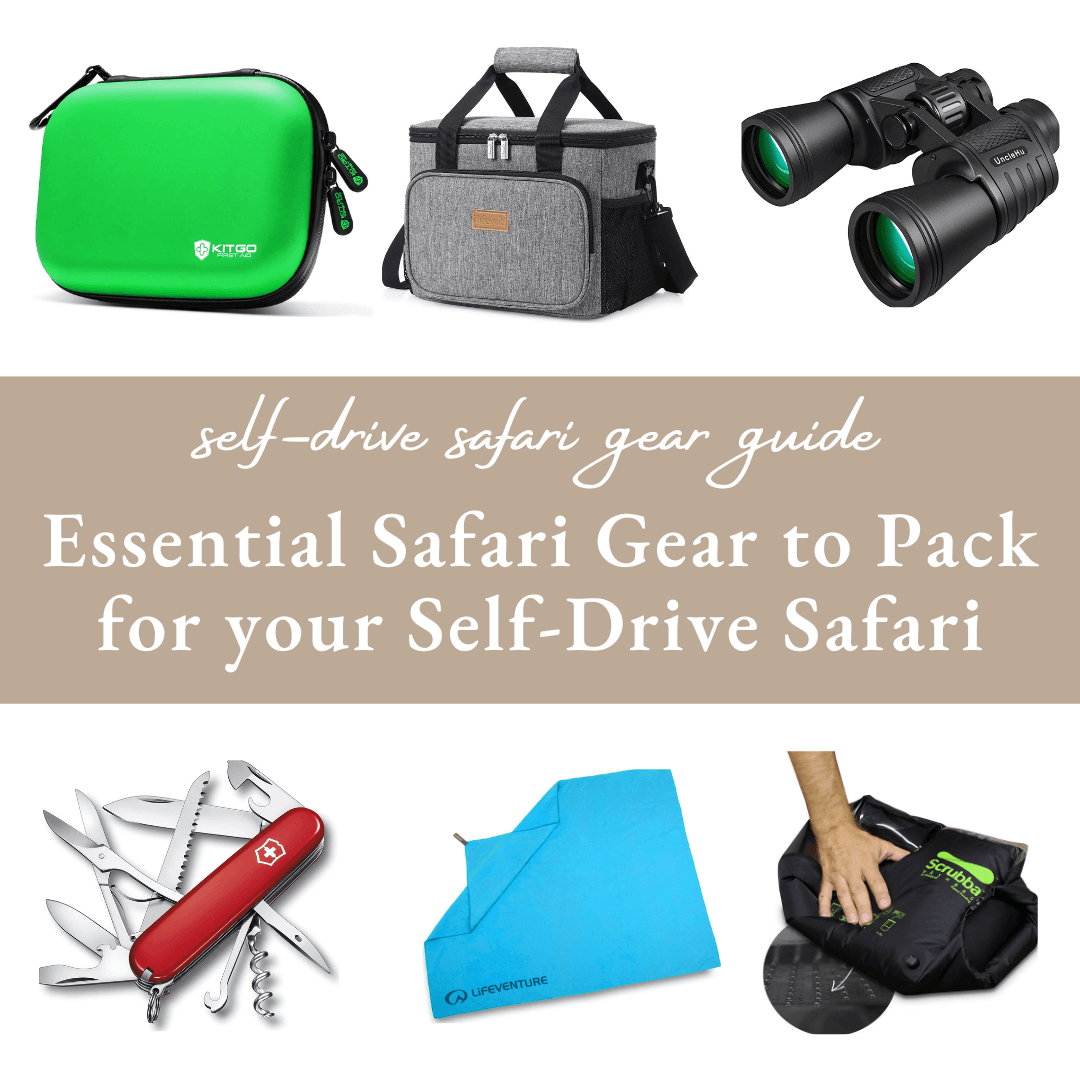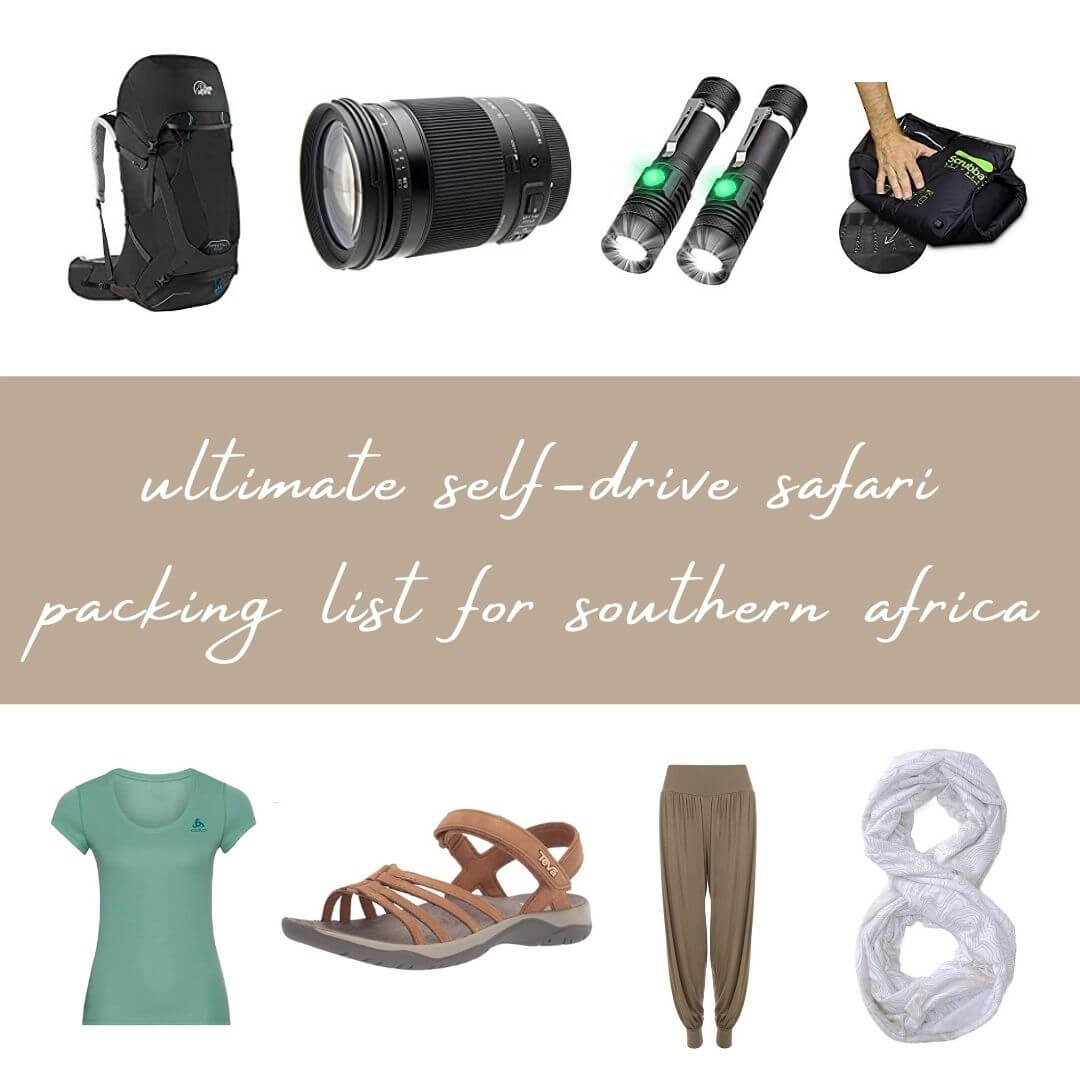How to prepare for your self-drive safari - Part 1
Just to let you know… This post (probably) contains affiliate links, including Amazon Associates links, and we may receive a small commission if you click one. This is at no extra cost to you and allows us to keep our blog running.
If you've been looking into going on safari you might have read articles about what to expect or what to pack and left feeling quite unprepared for your self-drive safari because the article was focussed on a luxury safari. And while white flowy dresses look amazing in photographs, it's not the most practical clothing when you need to set up and break down your rooftop tent or when you go on a bushwalk.
So if you're looking for a practical guide for your self-drive camping safari instead of a fashionable packing list then this article (part 1 of 2) is for you. This first part is all about how to prepare before you go on your self-drive safari.
Just a quick note: we're not going into how to plan your trip or how to pick the best destination, I am sure we will write a post about that at a certain time, but we are assuming here you already know where you going.
Picking the right car for your self-drive safari
On my first self-drive safari, we drove from the East coast to Kruger National Park. I was packed with 9 others in one of these typical South African vans going 10 km/h around potholes and not being able to take all the roads we wanted to because of the suspension and the quality of the roads. Till that time, I had been quite lucky and had only been on 2 to 3-hour guided safaris in Bushman Sands and Shamwari Private Game Reserve as part of my 6-month minor in wildlife and lodge management.
On this same trip, we stayed on a campsite close to Hluhluwe Imfolozi park where I had my first encounter with a 4x4 with rooftop tent. The elder couple invited me to have a look inside the tent, gave me a piece of ostrich sausage and told me about their travels. From that moment I knew that one day I would travel like that as well.
When we went back to South Africa on our honeymoon I wanted a 4x4 with a rooftop tent. Till I saw how expensive they were to hire for 3 weeks and realised that on our route from Cape Town to Kruger National Park we did not really need one. So I had to wait till our camping road trip to Namibia, where you really do need a 4x4.
So do you really need a 4WD for your self-drive safari?
If you’re camping; I would say yes. Not necessarily because of the 4WD (more on that below) but because these cars, like the Toyota Hilux, are bigger cars that are ideal for rooftop tents, it’s a pickup truck so you have a lot of space in the back for all your camping equipment as well as a fridge, some have a double fuel tank which is great for a country like Namibia where the next filling station can be hours away, they have high clearance and better suspension so you’re good if there are a lot of stones on the road and more comfortable when you drive over gravel roads and you’re a bit higher up so it’s easier to have a good overview to spot game.
If you’re not camping it depends where you’re going:
If you’re going to South Africa to Kruger National Park, Addo Elephant National Park or Hluhluwe Imfolozi you don’t need one.
If you’re going to Namibia and only go from Windhoek to Etosha National Park in the dry season you don’t need one although I would still suggest it due to the roads inside Etosha. If you’re visiting Etosha as part of a road trip you definitely want a 4WD.
Kgalagadi Transfrontier Park in South Africa is a bit of a different story. They advise you need a car with high clearance but don’t necessarily need a 4WD on the South African side. When we visited (without a 4WD but with high clearance) the first part was ok. But on our way to Mata Mata, the sand was so soft that it was almost impossible to stop to watch the game and then drive on again. Another car (a normal sedan) got stuck in the sand and was blocking the road, so we needed to slow down, also got stuck and were only able to get out with the help of a (you guessed right) 4WD. We even cancelled our stay in Nossob because it was even worse further north. So we won’t be going back without a 4WD.
Be sure to check the requirements for hiring a car for the country that you’re going to. You might need an international drivers license and there can be a minimum age, maximum speed limit and rules that you can’t drive after dark.
Equipment you need for a self-drive camping safari
When looking to rent your car be sure to check what is included in the price as not every car rental is including the same things. As you can see with our Namibia trip we needed to add a fridge, pillows and sleeping bags (for an extra cost off course) while these are quite essential for a camping safari.
On our South African trip, there were also some smaller things like a water basin and dishwashing tools included which he took with us because we had to before. Another difference was that while we were there we noticed a lot of other cars also had a spade and an axe, which would have been great additions while driving through Namibia.
As you can see from the below list it’s quite extensive but you will need to bring some things yourself
Namibia trip
Included Items
24 Piece Cutlery Bag
Cooking Pots
Frying Pan
Kettle
Plates
Bowls
Glasses
Mugs
Light
Tablecloth
Barbeque Tongs
Barbeque Grid
Camping Equipment
Rooftop Tent
Tent Pegs
Gas Bottle
Cooker Top
Chairs
Table
Vehicle
Second Battery
2x Spare Tyre
Tow Rope
Jumper Cables
Tools for Tyre change
Compressor
Fuses
We had to add
Fridge
Pillows
Sleeping bags
South Africa Trip
Included Items
24 Piece Cutlery Bag
Cooking Pots
Frying Pan
Kettle
Plates
Bowls
Glasses
Mugs
Tumblers
Wine goblets
Breadboard
Can opener
Corkscrew
Camping Equipment
Rooftop Tent
Rain cover for the tent
Tent Pegs
Gas Bottle
Cooker Top
Chairs
Table
Camping Equipment cont
Dustpan & brush
Fire extinguisher
Water basin
Pillows
Sleeping bags
Towels
Vehicle
Second Battery
2x Spare Tyre
Tow Rope
Jumper Cables
Tools for Tyre change
Compressor
Fuses
Watertank 45l
Spade
Fridge
Even if you’re not camping a fridge can be a great addition because shops in National Parks are not created equal. While the shops in Kruger National Park are well stocked, the same can not be said from the shops in Etosha or Kgalagadi so you want to stock up before entering the park. But it will also help you on your drives to keep your lunch, snacks and drinks cool (just be sure you only get out of your car in designated area’s).
And you might have noticed in the list above, it says there is a second battery this is because of the fridge. This is so that the fridge is not impacting your main battery immediately and you can keep it own also when not driving. But you will also get an electricity cable that you can plug in your car when you do have it on your campsite (as not all campsites have electricity) so that the fridge can run on that.
What do you need to bring?
While the list of what is included is quite extensive you do need to bring some camping equipment yourself;
Swiss army knife or a pocket knife
Kitchen towels, scrub sponge and dishwashing liquid
Seasoning for cooking. We use the small jars from this bottle set to bring salt & pepper.
A very important one: instant coffee. Not ideal but if there’s nothing else it will definitely help with the early mornings.
Zip-lock bags to preserve your food
Buy or bring toilet paper; just in case
A torch to get around in the dark. We also use a solar-powered camping lantern for on our table
This is a personal preference but we use travel sheets to line the rented sleeping bags with
Laundry detergent for washing your clothes. We used to bring this biodegradable laundry wash to wash in a basin but we have this laundry bag on our wish list that will make washing much easier.
If you wash your clothes you also need to dry them and this clothesline is ideal because you don’t need pegs and can easily be hooked onto trees.
You need probably need a new plug for South Africa/Namibia as they are not part of universal plugs (at least, we have never found one)
Planning your route & Booking your accommodation for a self-drive camping safari
Which accommodation/campsites to pick all comes down to the style you like to travel in and your budget. Before booking your campsites you must be aware (besides your budget) of the size of the National Parks and distances between the camps, how many days you have inside the park and at what time you will arrive. So let’s look a bit closer at each of these.
Arrival time
National Parks and the camps inside are fenced off and therefore work with open and close times of these fences. These times are often related to when the sun comes up and goes under so they change throughout the year. So be sure to know when the gates close for the park you are going to and what time you expect to arrive. When you arrive with hours to go till the closing time you just need to make sure your first camp is not too far inside the park. On the website of the national park, you’re going to you will often be able to find an overview of travel times between camps and the gates and the camps to help you decide a good option.
When you’re cutting it close, you need to plan this a bit more carefully as you might be refused entry when you are too late at the entrance gate. So when picking a campsite for your arrival day you need to consider your arrival time and the time it takes you to get from the gate to the camp. Be sure to check if your campsite has its own reception as, for example, some campsites in Kruger National Park like Malelane, Maroela or Balule don’t have a reception so you will need to check-in at another camp which adds more time.
Alternatively, you can arrange a cheap stay in accommodation just outside the gates of the national park which you would not mind if you were charged for if you are able to get to the park on time.
Size of the National Park and distances between the camps
To give you an idea of size; Etosha is 22.000 sq km. This makes it larger than the Serengeti and is comparable in size to Kruger. But even though the size of Etosha is similar to Kruger National Park the 2 National Parks are not comparable. Where you have over 20 camps in Kruger, there are only 6 main camps in Etosha and there as not nearly as many roads in Etosha.
While Kgalagadi Transfrontier Park is 38.000 sq km but this is for both South Africa’s Kalahari Gemsbok National Park (1/4th) and Botswana’s Gemsbok National Park (3/4th) that combined make up the Kgalagadi Transfrontier Park. The park has 3 traditional camps, 6 wilderness camps and 1 lodge.
As you can see these national parks are huge and the number of camps varies, so when booking your accommodation start with your arrival day and the time you arrive to plan your first camp. Then consider the number of days you have and visit the website of the National Park you’re going to for a park map and table with the travel times between camps.
Besides the distances you also need to consider the speed limits within the park. In Kruger, the limits are 50km on tar roads and 40km on dirt roads while in Etosha they are 60km/h on the roads and 20km/h in the camps. But often you will drive slower to see as much game as possible, because there's an elephant on the road or just to make sure you won't hit anything that jumps on the road from one of the bushes. So you want to make sure you don’t have to drive like a mad man to be on time in your camp and not have enough time to actually watch the animals.
Sunset at Satara Camp Site - Kruger National Park
Picking your campsites
Here it all comes down to the style you like to travel in and your budget. Consider the following:
Do you want peace and quiet? -> Check for camps that only have a campsite and no bungalows or chalets
Do you want to cook in a kitchen instead of on your gas bottle with cooker top or on a braai -> Book campsites that have communal kitchens
Don’t want to cook your diner -> Stay in the main camps that have restaurants or takeaway options
Do you need to be able to buy your food and wood inside the park? -> Most National Parks have shops but not all camps have shops. So you might need to stock up before arrival or go past one of the camps that do have a shop to be able to make dinner. In some camps like in Kgalagadi, you also need to provide your own water and firewood.
Do you need electricity? -> Check the facilities of the campsite as not all of them have electricity
Do you want your campsite to have a fence? -> In Kruger and Etosha all campsites are fenced but in Kgalagadi, some are without so be sure to check
When it comes to your budget for accommodation you also need to consider the entrance fees and/or conservation fees you need to pay for general entry and for each night you are staying.
Start early with planning your trip, renting your can and booking your accommodation as they can book up well in advance. We started planning our trip to Namibia a year in advance and you have a bit more time with South Africa, but we would still advise booking as soon as possible.
Want to know more about why accommodation can be booked up so long before arrival, especially in countries like Namibia? Check out our Ultimate Guide for your self-drive safari in Etosha National Park where we go more in-depth about how this works and how you can still have a chance of getting the accommodation that you want.
Health & safety during a self-drive safari
When travelling to Africa there are a couple of health and safety measures to consider which you might not think of when you normally go on holiday like vaccines, malaria and a well-stocked first aid kit.
Vaccinations
Before travelling be sure to check online, with your doctor or a travel clinic which vaccinations you need for the country you are travelling to like hepatitis A + B, DTP or rabies. Do this as early as possible as for some vaccines you need to have several shots. For example with hepatitis, there are 4 weeks in between the first and second shot and the third one is 6 to 12 months after the second and with rabies, you also have 3 shots divided over a couple of weeks. And if you’ve had any of these vaccinations before, don’t forget to check if they are still up to date as they only work for a limited amount of time.
Malaria
Also, check if the national park is located in a malaria region. If so, be sure to check with your doctor for precautionary measures. We always have Malarone when travelling to a malaria region but this is obviously a personal choice. Bring insect repellent and change into long sleeves when it gets dark and always pay attention when opening and closing the tent and the car door, just to be sure.
First aid kit
You can be quite far away from a doctor or a hospital so we like to be prepared and have a fully stocked first aid kit with:
Paracetamol
Antiseptic wound wash to protect against infection when you have cuts or grazes
Triangular bandage
Wound/gauze dressings
Alcohol-free cleansing wipes
Bandages and plasters
Band-aids
Diarrhoea relief and electrolyte powder
Pills against travel sickness
Echinaforce tablets to prevent colds (which happen quite often when coming from colder weather and the cold of the air in a plane)
For the same reason, we also bring tissues and strepsils.
Tweezer
Latex gloves
Scissors
Next to the first aid kit, we pack insect repellent and insect bite relief pens to treat the bites. As well as antibacterial hand gel and biodegradable baby wipes. These might sound strange and has only been an addition to our packing list since Namibia but it is great to clean dirty hands before eating, cleaning the table before preparing food or just wipe your face or arms if you’re covered in dust and there is no water or you have to wait to be able to shower.
Other things to pack for your self-drive safari
This is not an extensive packing list, and I am sure we will make one at some point, but just a quick overview of what you should bring (in our eyes). We do have a page with our favourite bags, camera gear and other essentials that you can check out here.
Backpack, flight bag for your backpack, daypack and luggage organisers
We often bring our walking shoes but they are not necessarily needed if you don’t go on a bushwalk. But we also take sturdy sandals with us like Teva sandals for when you’re on the campsite and setting up your tent and flip flops for showering.
1 pair of jeans (which we’ll wear on the plane as we tend to come from cold European weather), long pair of linen trousers, harem trousers are also great for women, shorts, a few T-Shirts, long sleeve shirt for evenings and a fleece for cooler moments or guided night/morning drives
Camera with at least a 200mm lens. We have an 18-300mm F3.5-6.3 Macro lens that already works much better than the standard 15-55mm lenses you often get with a camera but would love to have an even bigger one of 400mm. You also need a backup SD card, card reader, cleaning kit, UV filter
We like to take a power bank next to our chargers as not all campsites have electricity
Binoculars because the animals don’t just wander along the roads
Local sim as there is often limited cellphone coverage. We don’t tend to do this when going to Kruger but do for Kgalagadi or Namibia/Etosha and have had to use it when we had a flat tire and the battery of our fridge stopped working.
Personal beauty products - because your skin can get very dry we would advise bringing body lotion, hand lotion and lip balm. And of course sun protection
It’s not the best experience but we’re all for packing light so lightweight and quick-drying towels are a must
A brush; this one might seem odd but if you’ve driven on gravel roads you know how dusty everything gets. This brush is great to clean your car, bags and shoes.
Prescription medication (if needed)
International drivers licence (check if needed)
And there you have it...
..part 1 of 2 of how to prepare for your self-drive safari. We hope you enjoyed it and if you have any questions just leave your comments below. And if you are planning your own self-drive safari let us know below where you are going
The second part of how to prepare for your self-drive safari is all about what to consider and pay attention to while you are on safari. We will cover anything from tires & fuel to putting up your rooftop tent, making sure you have water, food and money and how to plan your days.
Want to know more about great self-drive safari locations and how to prepare for a self-drive safari? Keep on reading the following blogs:
Ultimate Guide for self-drive safari in Etosha National Park - Namibia
Ultimate guide for a Self-drive safari in Kgalagadi Transfrontier Park
If you don't want to miss any of our upcoming posts you can sign up below and you'll get them straight in your inbox.
If you're on Pinterest you can save this post for later.
you’ll also love
Leave a Reply
and if you enjoyed this blog, found it useful & think it could help others, use the icons below to share on social media and spread the love







